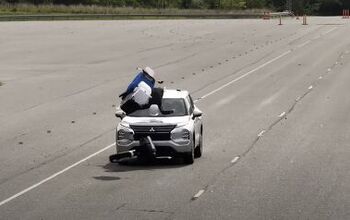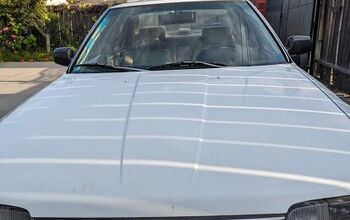Volkswagen of America Boss Envisions Getting People Out of SUVs and Into a Pickup

A Volkswagen concept that’s not really a concept appeared in New York City this week, aimed at gauging the American public’s level of interest in a unibody pickup that leans heavily in the direction of “crossover with a bed.”
While South American customers will soon be able to purchase a VW Tarok, the automaker says the model won’t come here. But something like it might. Unlike the company’s brawny Tanoak concept, a vehicle mimicking the Tarok could be offered at a lower price point, and that’s something that interests VW of America head Scott Keogh.
Speaking to Autoblog on the sidelines of the New York Auto Show, Keogh says he can see exactly where such a model would fit in the brand’s lineup.
“We can come in with an extremely smart price point,” he said. “I think you could put a vehicle like that in the marketplace for mid-20s with proper engine, proper everything.”
For South American buyers, the only engine available in the Tarok is a turbocharged 1.4-liter four-cylinder borrowed from the brand’s small car line. Any truck offered in America would need a power boost, and the Atlas, which shares a platform with the Tarok, has the solution — a turbo 2.0-liter and 3.6-liter V6.
While Volkswagen has expressed interest in the midsize pickup space, it has also expressed reservations. The main players are very well established, as well as body-on-frame, and its ranks are growing. Considering VW doesn’t seem interested in offering a rebadged Ford Ranger in this continent, would it be worth it to to develop an extended-platform midsizer like a Tanoak, or keep the Atlas’ wheelbase and try to offer something new at a lower price?
The Atlas starts at $30,895 (before destination) for the vanishingly rare front-drive four-cylinder model, and a model like the Tanoak, boasting an 11-inch wheelbase stretch, would find itself competing directly with similarly priced BOF pickups. Hardly an attractive prospect.
With something like the Tarok, Keogh said, VW wouldn’t just be luring pickup intenders — it might move people out of their modestly priced crossovers and SUVs.
VW’s American arm has more autonomy than in years past, part of the automaker’s move to decentralize its planning and keep on top of regional trends. If Keogh can make a case for a Tarok-like truck, head office is likely to listen. And Keogh is interested.
“We do see a big trend in terms of outdoor enthusiasm,” Keough said. “Do I see more opportunity than I did before? I do.”
[Image: Volkswagen]

More by Steph Willems
Latest Car Reviews
Read moreLatest Product Reviews
Read moreRecent Comments
- Lou_BC Well, I'd be impressed if this was in a ZR2. LOL
- Lou_BC This is my shocked face 😲 Hope formatting doesn't fook this up LOL
- Lou_BC Junior? Would that be a Beta Romeo?
- Lou_BC Gotta fix that formatting problem. What a pile of bullsh!t. Are longer posts costing TTAC money? FOOK
- Lou_BC 1.Honda: 6,334,825 vehicles potentially affected2.Ford: 6,152,6143.Kia America: 3,110,4474.Chrysler: 2,732,3985.General Motors: 2,021,0336.Nissan North America: 1,804,4437.Mercedes-Benz USA: 478,1738.Volkswagen Group of America: 453,7639.BMW of North America: 340,24910.Daimler Trucks North America: 261,959


































Comments
Join the conversation
If VW holds true to form, they'll make a decision two years from now, and take another four years to bring it to the US market.
I don't see Ridgelines at every traffic light. In fact, they are downright rare here in metro Detroit. Don't see FCA chomping at the bit to bring in the Toro either.